
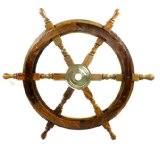
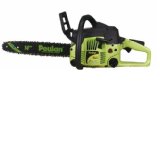
Search This Site
Search With Google
Luster Leaf 1880 Rapitest Electronic 4-
This Rapitest electronic 4 way analyzer has a 3 probe design to allow the user to use one meter but to get the work of 4 meters. This meter can test soil pH, soil moisture content, fertility of the soil and the amount of light available. It has an analogue display and does not require batteries for its operation.
Moisture Meter Guide 2010 Contact details:garnett65@hotmail.com
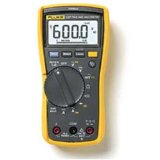

The complete moisture meter website
Moisture Meter Guide
Boat Moisture Meter
A moisture meter proves itself to be a useful tool when testing the moisture content levels of boat materials. When assessing a boat, care, judgement and experience should all be employed and then the moisture meter used as the last tool to give the final assessment. Hull moisture meter
Need A Chainsaw For Firewood?
The petrol chainsaw is used to fell trees, as well as for pruning and cutting overgrowth. Tree surgeons favour the petrol chainsaw and use it for cutting away branches and foliage. Firewood assistance
Orchid Moisture Meter
The orchid belongs to a widespread and very diverse family of flowering plants which have fragrant and colourful blooms. Orchids can be found in pretty much every habitat. Plant moisture meter
Caravan Moisture Meter
Any caravan that is kept open to the elements all year round can become very susceptible to damp and damp related problems if proper precautions are not taken to prevent this. Damp detector
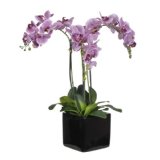
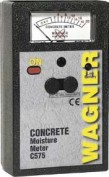
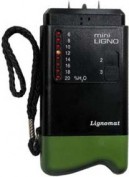
Garden Moisture Meter
The garden moisture meter helps any avid gardener to measure and monitor many different conditions to ensure that they can maintain healthy growing conditions for both indoor as well as outdoor plants. In order to have healthy thriving plants Soil moisture meter

Bonsai Moisture Meter
When you check out the definition of bonsai in the Collins English Dictionary the description you get is “The art of growing dwarfed ornamental varieties of trees or shrubs in small shallow pots by selective pruning”. And additionally “A tree or shrub grown by this method”
There is quite a history behind bonsai growing. The word bonsai is made up of two syllables which mean “tray” and “pot”. Now when you say bonsai out aloud it has a Japanese sounding ring to it, but the characteristics of the word are Chinese. This is appropriate as bonsai growing actually originated in China, but it was the Japanese who refined the art of bonsai gardening and introduced bonsai growing to the Western World. Plant moisture meter
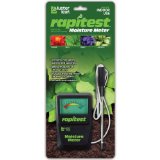
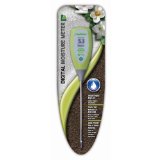
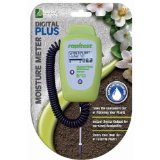
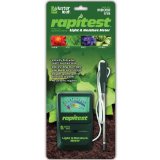
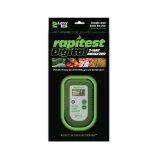
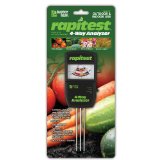
Rapitest Moisture Meter
Orchid Moisture Meter
The orchid belongs to a widespread and very diverse family of flowering plants which have fragrant and colourful blooms. Orchids can be found in pretty much every habitat, just excluding the glaciers. The largest concentration of orchids are found in the tropics, particularly in Asia, South America and Central America. Species have also been discovered close to Antarctica.
Orchids are cultivated by many for the enjoyment of their flowers all around the world. The most popular cultivated orchids tend to be those species which are tropical or subtropical. The bee orchid (Ophrys apifera), fragrant orchid (Gymnadenia conopsea) and pyramidal orchid (Anacamptis pyramidal is) are just a couple of species that are commonly found in garden centres for sale. Plant moisture meter
Guide To Buying A Garden Moisture Meter
Any experienced gardener will tell you that it is essential to have many different tools and pieces of equipment to pursue your hobby and reach your goals. The garden moisture meter is just one of these tools, but proves to be most useful. They are designed for both, inside and outside use, to assist you with your planning of day to day watering and detecting any possible soil problems. Moisture meter buying guide
Additional Information On The Rapitest 1880 Moisture Meter
To measure soil PH with this meter take away the top 2 inches of the soil and then break up and crumble the soil underneath down to a depth of 5 inches. Take away any stones and organic debris which will affect the results from the meter. Wet the soil thoroughly with water to give a mud consistency. On the meter use the toggle switch to move the indicator to the PH point and then test.
To test for the light that you plant receives, select the light option on the selector switch. Hold the meter, so that the window on the top of the meter case is in the same position as the leaves on top of the plant you are testing for. Do not obstruct this window or allow any shadows from your body to interfere with it. Hold the window towards the light source of the plant and note down the reading. It is always a good idea to take 2 readings to give you a more accurate and precise reading. A to H on the reading scale indicate the quality of light that the plant is receiving. A is not good for many plants and top of the scale H can be too much light for many other different species of plants. So take your reading and compare the results with the chart and plant species and their light requirements.
To test for moisture content levels in soil you insert the probe down vertically in to the soil within the plant pot. Try to do this halfway between the edge of the pot and the stem of the plant. How far you go down with the probe in to the pot will be dependant upon the actual pot size. You probe deeper the larger the pot is. You should be aiming to probe about half way down a pot size to get a suitable reading.
When you push the probe in to the soil you will notice that the meter readings will vary as the probe goes downwards. This is because the moisture content levels are not uniform and certain types of soils do create moisture pockets. You are advised to take 2 readings in one sitting to confirm any results. Once your readings have been taken do not leave the probe in the soil. Remove it and dry and clean it.
The readings will be displayed in a numerical listing between 1 and 10. You need to check with the handbook that is supplied with the moisture meter to ascertain what the resulting number means for a specific plant.
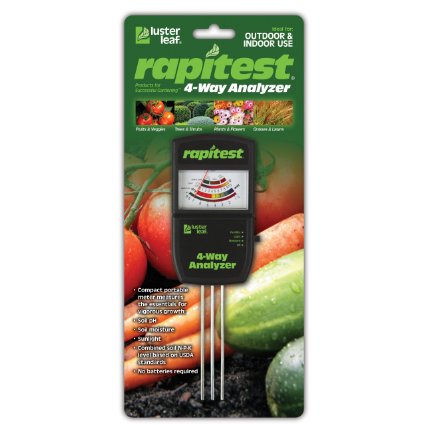
| Tramex Moisture Encounter Plus |
| Tramex Compact Wood Moisture Meter |
| Tramex Concrete Encounter Moisture Meter |
| Tramex Skipper Plus Moisture Meter |
| Tramex Roof And Wall Moisture Scanner |
| Sonin Digital Moisture Meter model 50218 |
| Sonin Digital Moisture Meter 270 model 50270 |
| Sonin Moisture Test Tool model 50210 |
| Sonin Moisture Test Meter Model 50211 |
| Oak |
| Douglas Fir |
| Beech Tree |
| Elm Tree |
| Hickory Tree |
| Maple Tree |
| Pine Tree |
| Prevent And Repair Gaps In Wooden Floorboards |
| How To Fix A Squeaky Hardwood Floor |
| How To Repair A Hardwood Floor That Has Buckled |
| Which Is The Best Firewood? |
| Concrete |
| Concrete Moisture |
| Screed Moisture Meter |
| SDS Drill |
| Belle Cement Mixer |
| SDS Drill Advice |
| Which SDS Drill |
| SDS Drill Accessories |
| Drilling Into Concrete |
| Kennedy Tool Box |
| Moisture - Basic Facts |
| Types Of Damp |
| Wet Rot |
| Dry Rot |
| Mold |
| Water Leak Detection |
| Stucco Moisture |
| Water Damage |
| Moisture And Rust |
| Moisture Damage To A Chimney |
| Wallpaper Stripper |
| Plaster Mixer |
| Why Worry About Moisture Problems |
| Does Your Home Have A Moisture Problem? |
| How To Solve Moisture Problems |
| How To Use Anti Mold Paint |
| Rising Damp |
| Condensation |
| Salt Damp |
| How To Avoid Bathroom Condensation |
| How To Remove Black Mold |
| How To Prevent Bathroom Mold |
| Soldering Kit |
| Soldering Kit Contents |
| Soldering Kit Advice |
| Bonsai Tree Classification |
| Growing Bonsai From Seed |
| Bonsai Tree Care |
| Bonsai Tree Training |
| Bonsai Tools |
| Displaying Bonsai |
| Bonsai Calendar |
| Bonsai Plants |
| The Thirsty Light Curve Moisture Meter |
| The Thirsty Light Ladybird Moisture Meter |
| The Thirsty Light Bumble Bee Moisture Meter |
| The Thirsty Light Butterfly Moisture Meter |
| Hanna Instruments |
| Agratronix Portable Coffee Moisture Tester |
| Lawn Aerator |
| Lawn Roller |
| Lawn Rake |
| Lawn Sand |
| Chainshot |
| Chainsaw Gloves |
| Chainsaw Trousers |
| Chainsaw Boots |
| Mac 4 - 20 XT Chainsaw |
| Mac 738 Chainsaw |
| Mac 842 Chainsaw |
| Mac 20X Power Chainsaw |
| Einhell BG-PC 3735 Chainsaw |
| Einhell BG-PC 4040 Chainsaw |
| Einhell BG-PC 5045 Chainsaw |
| Poulan P3314 Chainsaw |
| Poulan P4018 Chainsaw |
| Poulan Pro PP3816AV Chainsaw |
| Poulan Pro PP4218AVX Chainsaw |
| Poulan Pro PP4620AVX Chainsaw |
| Efco MT 4100 SP Chainsaw |
| Efco MT 3500 Chainsaw |
| Efco 132 S Chainsaw |
| Efco 147 Chainsaw |
| Efco 152 Chainsaw |
| Efco MT 7200 Chainsaw |
| Efco MT 8200 Chainsaw |
| Efco MT 3750 Chainsaw |
| Methods Of Obtaining Soil Moisture Levels |
| Hygrometer |
| Psychrometer |
| Rain Gauge |
| Wave Ventilation System |
| Humidity |
| Hygrometer For Keeping Reptiles |
| Humidor |
| Weather Stations |
| Musical Instrument Storage |